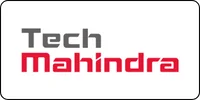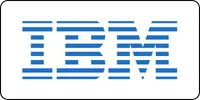Solid Edge







Solid Edge Course
Looking to boost your CAD skills with one of the most in-demand tools in the industry? Our Solid Edge certification course in Vadodara is designed to help you master Siemens’ powerful CAD software, known for its synchronous technology that merges the speed of direct modeling with the precision of parametric design.
This Solid Edge coaching class in Vadodara offers a structured approach to learning everything from foundational design concepts to advanced modeling techniques. You’ll gain practical experience in 3D modeling, assembly creation, and generating detailed technical drawings—skills that are crucial for roles in mechanical engineering, product development, and industrial design.
Key areas of focus include Sheet Metal Design, where you’ll learn to model, manage, and flatten sheet metal parts while considering real-world manufacturing constraints. Additionally, the Surface Modeling module helps you craft complex, high-quality surfaces—essential in industries such as automotive, consumer electronics, and industrial design.
By completing this course, you’ll gain not only technical skills but also an edge in the job market. Solid Edge proficiency boosts your productivity, enhances your portfolio, and opens the door to more career opportunities. Whether you’re a student, a design professional, or someone looking to upskill, this is the best Solid Edge training in Vadodara to help you reach your goals.
What will I learn?
- Become proficient in using Solid Edge software, understanding its interface, tools, and functionalities for creating 2D drafts and 3D models.
- Gain a solid understanding of fundamental design principles and best practices in CAD, including geometric dimensioning and tolerancing (GD&T), assembly design, and parametric modeling.
- Learn how to create detailed 2D drawings, including orthographic projections, section views, dimensioning, and annotations.
- Develop skills in creating 3D models of parts and assemblies, including creating sketches, extruding, revolving, sweeping, lofting, and other advanced modeling techniques.
- Understand the principles of surface modeling and learn how to create complex surface geometries for aesthetic and functional purposes.
- Learn how to create and manage assemblies of parts, including assembly constraints, motion simulations, and exploded views.
- Gain an understanding of simulation and analysis tools within Solid Edge for testing the performance and behavior of your designs under various conditions.
- Learn how to manage design data effectively using Solid Edge's built-in data management tools, and collaborate with team members through cloud-based platforms.
- Explore techniques for rendering and visualizing your designs to create realistic presentations and marketing materials.
Requirements
- Basic Computer Skills
- Understanding of Engineering Principles
- Technical Drawing Knowledge
Solid Edge Course Content
- Introduction to Solid Edge
- Overview of Solid Edge software
- Understanding the user interface and navigation
- Introduction to 2D drafting and 3D modeling concepts
- Sketching Fundamentals
- Creating and editing 2D sketches
- Applying sketch constraints and dimensions
- Understanding sketching best practices
- Part Modeling Basics
- Creating basic 3D features (extrude, revolve, sweep)
- Understanding feature-based parametric modeling
- Using the feature manager tree for feature management
- Intermediate Part Modeling
- Exploring advanced modeling techniques (fillets, chamfers, patterns)
- Working with synchronous and ordered modeling workflows
- Utilizing advanced features like blends, lofts, and ribs
- Advanced Part Modeling
- Mastering complex modeling tasks with surface modeling
- Creating sheet metal parts and utilizing specialized features
- Exploring assembly modeling techniques
- Assembly Design
- Inserting and positioning components within assemblies
- Applying assembly constraints and relationships
- Exploring assembly features and manipulation tools
- Drawing and Detailing
- Creating and annotating drawing views
- Adding dimensions, annotations, and GD&T symbols
- Generating bill of materials (BOM) and parts lists
- Sheet Metal Design
- Understanding sheet metal design principles and terminology
- Creating sheet metal parts with bends, flanges, and forming tools
- Unfolding and flattening sheet metal parts
- Surface Modeling
- Exploring advanced surface modeling techniques
- Creating and editing surfaces using loft, sweep, and boundary features
- Converting solid models to surfaces and vice versa
- Parametric Modeling Techniques
- Utilizing parameters and relations for design automation
- Creating family tables and configurable components
- Implementing design variations and options
- Simulation and Analysis
- Introduction to finite element analysis (FEA)
- Analyzing stress, displacement, and factor of safety in parts and assemblies
- Optimizing designs for performance and reliability
- Collaboration and Data Management
- Working with Product Data Management (PDM) systems
- Collaborating with team members and stakeholders
- Managing design revisions and version control
- Customization and API Programming
- Customizing the Solid Edge environment and user interface
- Creating macros and automation scripts using Solid Edge API
- Integrating Solid Edge with other CAD/CAM software and systems
- Case Studies and Real-World Applications
- Analyzing real-world design examples and case studies
- Hands-on exercises and projects to reinforce concepts
- Presentations and discussions on best practices and industry standards
Introduction to Sheet Metal Design
- Overview of sheet metal design principles and terminology
- Understanding the advantages and applications of sheet metal parts
- Introduction to the sheet metal design environment in Solid Edge
- Basic Sheet Metal Features
- Creating base flanges, edge flanges, and miter flanges
- Adding bends, corners, and reliefs to sheet metal parts
- Utilizing bend tables and parameters for design flexibility
- Advanced Sheet Metal Features
- Exploring advanced sheet metal features such as tabs, lances, and punches
- Using the jog, bridge, and contour flange tools for complex designs
- Incorporating embosses, ribs, and louvers into sheet metal parts
- Sheet Metal Cutouts and Holes
- Adding cuts, holes, and cutouts to sheet metal parts
- Understanding different types of cuts (blind, counterbore, countersink)
- Utilizing hole and cutout features for part assembly and fabrication
- Sheet Metal Bends and Forming
- Understanding sheet metal bending techniques and parameters
- Creating bend tables and calculating bend allowances
- Using the bend feature for creating bends with custom parameters
- Sheet Metal Unfolding and Flattening
- Unfolding and flattening sheet metal parts for manufacturing
- Understanding flat pattern development and layout
- Checking for interference and collision issues in unfolded parts
- Sheet Metal Documentation
- Creating technical drawings and documentation for sheet metal parts
- Adding dimensions, annotations, and GD&T symbols to sheet metal drawings
- Generating bill of materials (BOM) and parts lists for sheet metal assemblies
- Sheet Metal Assembly Design
- Inserting and positioning sheet metal components within assemblies
- Applying assembly constraints and relationships to define motion
- Exploring assembly features and manipulation tools for sheet metal assemblies
- Sheet Metal Design Considerations
- Understanding design considerations for manufacturability
- Designing for minimum bend radius and material thickness
- Avoiding interference and collision issues in sheet metal assemblies
- Sheet Metal Simulation and Analysis
- Introduction to finite element analysis (FEA) for sheet metal parts
- Analyzing stress, displacement, and factor of safety in sheet metal designs
- Optimizing sheet metal designs for structural integrity and performance
- Case Studies and Real-World Applications
- Analyzing real-world sheet metal design examples and case studies
- Hands-on exercises and projects to reinforce concepts
- Presentations and discussions on best practices and industry standards
- Introduction to Surface Modeling
- Overview of surface modeling principles and terminology
- Understanding the advantages and applications of surface modeling
- Introduction to the surface modeling environment in Solid Edge
- Basic Surface Creation
- Creating and editing basic surface geometry
- Utilizing surface creation tools such as extrude, revolve, and sweep
- Understanding surface properties and parameters
- Advanced Surface Features
- Exploring lofted and swept surface features
- Using guide curves to control surface shape and curvature
- Creating complex surface forms and transitions
- Surface Editing and Modification
- Editing and manipulating surface geometry
- Applying surface trimming and extending tools
- Utilizing surface merging and stitching techniques
- Surface Analysis and Optimization
- Analyzing surface curvature and continuity
- Performing surface quality checks and analysis
- Optimizing surface designs for manufacturability and performance
- Surface Modeling Techniques
- Exploring advanced surface modeling techniques
- Creating surface blends, offsets, and fillets
- Using surface knitting and stitching tools
- Complex Surface Modeling
- Designing organic and freeform surface shapes
- Using spline-based surface modeling techniques
- Applying curvature control and continuity constraints
- Surface Modeling for Aesthetic Design
- Creating stylish and ergonomic surface designs
- Incorporating surface textures, patterns, and logos
- Understanding surface finish requirements and specifications
- Surface Modeling for Mold Design
- Design considerations for moldable surface geometry
- Creating draft angles and split lines for mold design
- Generating core and cavity surfaces for molds
- Surface Modeling for Analysis and Simulation
- Performing finite element analysis (FEA) on surface models
- Analyzing stress, displacement, and factor of safety
- Optimizing surface designs for structural integrity and performance
- Surface Modeling Documentation
- Creating technical drawings and documentation for surface models
- Adding dimensions, annotations, and GD&T symbols to surface drawings
- Generating 3D PDFs and other interactive documentation
- Case Studies and Real-World Applications
- Analyzing real-world surface modeling examples and case studies
- Hands-on exercises and projects to reinforce concepts
- Presentations and discussions on best practices and industry standards
Get in touch
400+ Global Employment Partners







































Why Choose Solid Edge Certification Course from Bright Computer Education?
Solid Edge training programs are designed to equip students and professionals with the skills needed for modern mechanical design and engineering. Whether you’re planning to Learn Solid Edge in Vadodara, taking your first steps with Solid Edge for beginners in Vadodara, or aiming to sharpen your capabilities through Advanced Solid Edge training in Vadodara, these courses offer a comprehensive and hands-on learning experience. The curriculum covers 3D modeling, assembly design, simulation, and drafting using industry-relevant techniques. With expert mentorship, real-time projects, and a focus on design innovation, learners are prepared to tackle challenges in product development, manufacturing, and engineering design.

Designed Curriculum
Our curriculum covers everything from basic to advanced topics. Topics include variables, data types, control structures, functions, OOP, STL, and more.

Hands-on Learning
Dive into practical exercises and coding projects that reinforce learning and help you build real-world applications.

Experienced Instructors
Learn from industry experts with years of experience in C programming and software development.
Flexible Learning
Choose from flexible scheduling options, including self-paced learning or live virtual classes to fit your busy lifestyle.
Career Development
Gain valuable skills sought after by employers in various industries, from software development to embedded systems and beyond.
Interactive Learning
Engage with fellow learners and instructors through live Q&A sessions, discussion forums, and collaborative coding exercises.
Diverse Career Opportunities in Solid Edge: Exploring Paths in India's Technology Sector
Solid Edge is a powerful 3D CAD software developed by Siemens, widely used for mechanical and electrical product design, simulation, and manufacturing. The course covers essential skills such as parametric modeling, assembly design, drafting, sheet metal design, and simulation, making it ideal for engineering and product development roles.
In India, professionals trained in Solid Edge can expect to earn between ₹3–8 lakhs per annum, depending on their expertise and the industry. There is consistent demand in automotive, aerospace, machinery manufacturing, and product design companies, especially where Siemens PLM solutions are implemented.
Internationally, especially in countries like the USA, Germany, Japan, and the UK, Solid Edge professionals are valued and earn between $55,000 to $90,000 per year. Companies in sectors such as industrial automation, product innovation, and mechanical engineering often prefer candidates with Solid Edge proficiency.
Frequently Asked Questions
Recently View Courses
Course Details Curriculum Placement FAQ’s Primavera Training Primavera is a comprehensive project portfolio management...
Read MoreCourse Details Curriculum Placement FAQ’s Ansys Training Bright Computer Education delivers top-tier Ansys Training...
Read MoreCourse Details Curriculum Placement FAQ’s Revit In One Live Training Master the essential skills...
Read More
